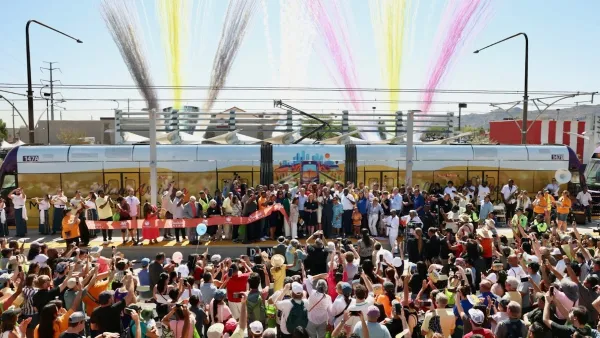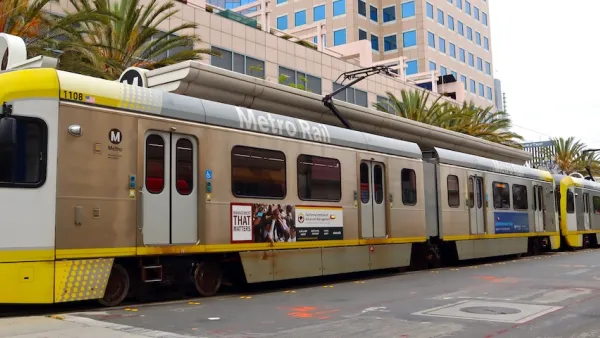Plans to build a group of villages near science and biotech office parks in Maryland could help the area secure federal light rail funding.
"The project would create a 20-million-square-foot network of urban villages near existing life sciences office parks west of Interstate 270.
Henry Kay, deputy administrator for planning and engineering for the Maryland Transit Administration, said the increased density from the science city would be "strongly beneficial . . . and makes all the alternatives -- light rail and bus rapid transit" feasible for a federal funding application. Without the added density, light rail would not qualify, he said, but bus rapid transit would. A detailed state report on the proposed ridership for the project, known as the Corridor Cities Transitway, is to be released next week."
The site is about four miles from the nearest Metro station, and planners are calling for the creation of public transit as an integral part of the proposed "science city".
FULL STORY: Md. 'science city' plan might help odds for U.S. funding of light rail

Planetizen Federal Action Tracker
A weekly monitor of how Trump’s orders and actions are impacting planners and planning in America.

Maui's Vacation Rental Debate Turns Ugly
Verbal attacks, misinformation campaigns and fistfights plague a high-stakes debate to convert thousands of vacation rentals into long-term housing.

Restaurant Patios Were a Pandemic Win — Why Were They so Hard to Keep?
Social distancing requirements and changes in travel patterns prompted cities to pilot new uses for street and sidewalk space. Then it got complicated.

In California Battle of Housing vs. Environment, Housing Just Won
A new state law significantly limits the power of CEQA, an environmental review law that served as a powerful tool for blocking new development.

Boulder Eliminates Parking Minimums Citywide
Officials estimate the cost of building a single underground parking space at up to $100,000.

Orange County, Florida Adopts Largest US “Sprawl Repair” Code
The ‘Orange Code’ seeks to rectify decades of sprawl-inducing, car-oriented development.
Urban Design for Planners 1: Software Tools
This six-course series explores essential urban design concepts using open source software and equips planners with the tools they need to participate fully in the urban design process.
Planning for Universal Design
Learn the tools for implementing Universal Design in planning regulations.
Heyer Gruel & Associates PA
JM Goldson LLC
Custer County Colorado
City of Camden Redevelopment Agency
City of Astoria
Transportation Research & Education Center (TREC) at Portland State University
Jefferson Parish Government
Camden Redevelopment Agency
City of Claremont





























